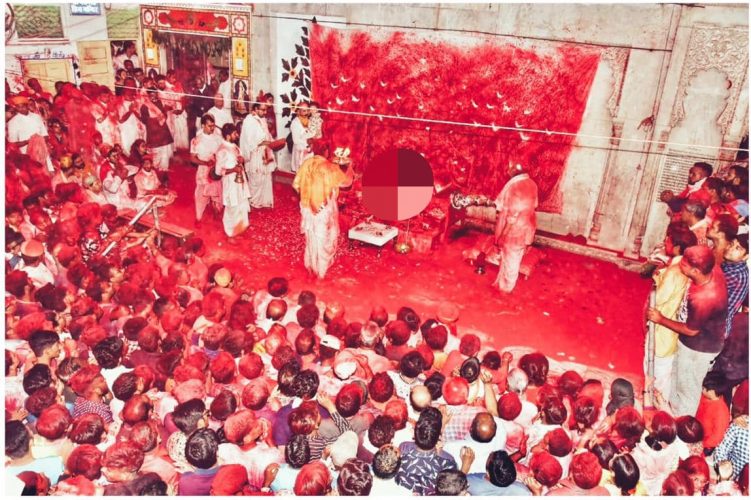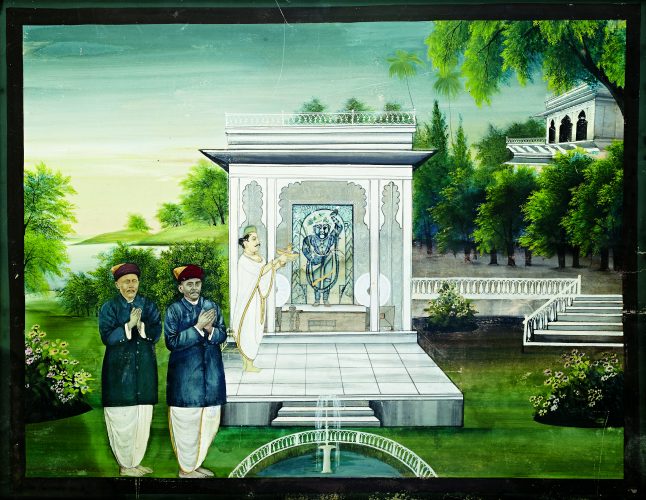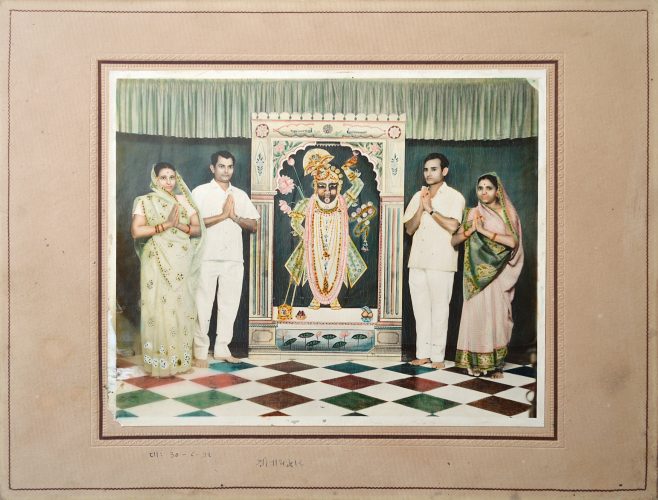
dinsdag 16 februari 2021
Aziatische Kunst Auteursinterview: 2021/1
In het eerste nummer van Aziatische Kunst in 2021 schrijft dr. Isabella Nardi (PhD, SOAS, University of London) over vier bijzondere zogenaamde “Nathdwara paintings” in de collectie van het Rijksmuseum. De KVVAK was benieuwd naar dr. Nardis ervaringen in de Śrī Nāthjī tempel, de tempel die centraal staat in deze schilderingen, en naar het belang van het beeld van Śrī Nāthjī. Wij vroegen dr. Nardi ook naar de rol die fotografie speelt en naar hoe foto’s van de tempel, het beeld en pelgrims te vergelijken zijn met de schilderingen.
1. Dr. Nardi, in your upcoming article, you carefully study four Nathdwara paintings in the collection of the Rijksmuseum.The Rijksmuseum’s Nathdwara paintings from the late 19th and early 20th century are assumed to have been produced for pilgrims and devotees who visited the town of Nathdwara and the Śrī Nāthjī temple. They illustrate the celebration of different festivals at the temple as part of a tradition that is still carried on today. Can you tell us about your personal experience of a particular celebration at the temple?.
I have visited the temple three times. On the first two occasions I simply witnessed the regular seva, that is one of the daily rituals you often see depicted in the paintings. Last time I went, in March 2019, it was a very different experience. I happened to be there during the celebrations of Holi. After entering the temple with a big crowd of devotees, I walked through the Nij Mandir where, in fact, I was hardly able to see Śrī Nāthjī because I was pushed out of the hall by the multitude of people. At that point, I had no choice but to follow the crowds to another courtyard where, on a high platform, there were priests playing Holi. They were throwing red gulal both to an icon standing on the platform – I assume it was Navnītpriyjī but couldn’t go close enough – and to the ecstatic pilgrims. Soon after entering that congested space a big ball of red gulal hit my face. I remember I couldn’t breathe for a few seconds and then a very intense rose perfume pervaded my sense of smell. The priests mixed gulal with rose essence oil, which was a pleasing surprise. I will never forget that moment, I felt like I had truly experienced the temple as a devotee participating in the action and the excitement of the moment. Just imagine, I was like one of the spectators you see in Figure 1. Also notice that, while the head priest is allowed to take photographs in the temple premises, he is always careful to cover with a dot the icons in the photographs as a way to protect them.
2. Three of these beautiful watercolor paintings are depictions of a form of Krishna known as Śrī Nāthjī. You write that the Śrī Nāthjī image was seen, not as a man-made sculpture, but as a self-manifested icon. This icon was one in a series of nine such icons, collectively known as the “Nine Treasures”, but Śrī Nāthjī was by far the most important of these “Treasures”. Is there a particular reason for the exceptional popularity of Śrī Nāthjī compared to the other icons?
Yes, there is. While the primacy of Śrī Nāthjī is attested in sectarian literature (see for example the ‘Chronicle of the Manifestation of Śrī Nāthjī’), the icon’s current hierarchical position within the sect can only be explained with the rules of primogeniture and seniority of the Vallabha Sampradaya which were established after the death of Vitthalnath. I’ll try to explain in brief: when Vallabha died in 1531, the sect was entrusted to his son Vitthalnath and, with his death, the spiritual leadership passed to his seven sons who inherited the exclusive right to initiate new disciples. This subdivision of spiritual authority led to the establishment of seven lineages, each headed by a priest who is a male descendant of Vallabha and Vitthalnath. The head priests of the seven lineages are also the caretakers of one (or more) of the nine icons (navnidhis), which are considered repository of legitimacy and power. Vitthalnath’s eldest son received Śrī Nāthjī and also established the primacy of the first lineage based on seniority. The same lineage is also responsible for the small portable metal icon of Navnītpriyjī which is used in specific rituals like the Nanda Mahotsava explained in the article.

Unknown artist or studio. Cut-and-pasted gelatin silver prints, opaque watercolor and gold on paper; c. 1930s. Image: 45.5 x 55.9 cm. Photo courtesy: Anil Relia Collection, Ahmedabad.
3. I understand that in your research of visual images from Nathdwara, you will also be looking at photographs. Could you tell us a little bit more about the photographs and how they differ from the paintings with regard to both usage and the subjects depicted?
At the end of the nineteenth century, Nathdwara witnessed a great deal of artistic experimentation both in terms of iconography and technique. This is when photography started to play an increasingly important role, something that I have elucidated in Portraits of Devotion (Mapin 2019).
This experimentation was in part due to a redefinition of patronage. While for many years painting at Nathdwara served the temple priests, royalty and wealthy devotees, now also regular pilgrims commissioned paintings and wanted their portraits in them. While skilled artists like Ghasiram were known for painting true to life portraits, the camera offered an even faster and effective way to produce them.
Traditional painters arranged their studios so that they could take photographs of the devotees but, at this time, photography was not used in a straightforward way, it was subverted to please a specific audience of pilgrims. In fact, one of the most interesting innovations was the production of images in a mixed media technique, such as figure 2. This features a depiction of Śrī Nāthjī next to a priest in the traditional Nathdwara painting style, and the portrait of the commissioners in a “photographic” style. This was achieved by gluing their photographs to the surface of the painting, skillfully retouching their face with pigments. The result is quite interesting, mixing traditional painting and photographic aesthetics.
Archival evidence shows that by the mid-twentieth century, photography became even more popular. Figure 3 is a classic example: it is a black and white photograph capturing a family of devotees posing next to a painted image of Śrī Nāthjī in a studio. The work was lightly tinted to add some details to a work that was otherwise considered flat and unattractive by its commissioners.
These works were hung on the walls of private houses where they become mementos of a pilgrimage to Nathdwara. Today they are increasingly becoming popular with art dealers who procure them in old havelis to sell them in the art market.

The KVVAK would like to thank dr. Nardi for her participation in this interview.
